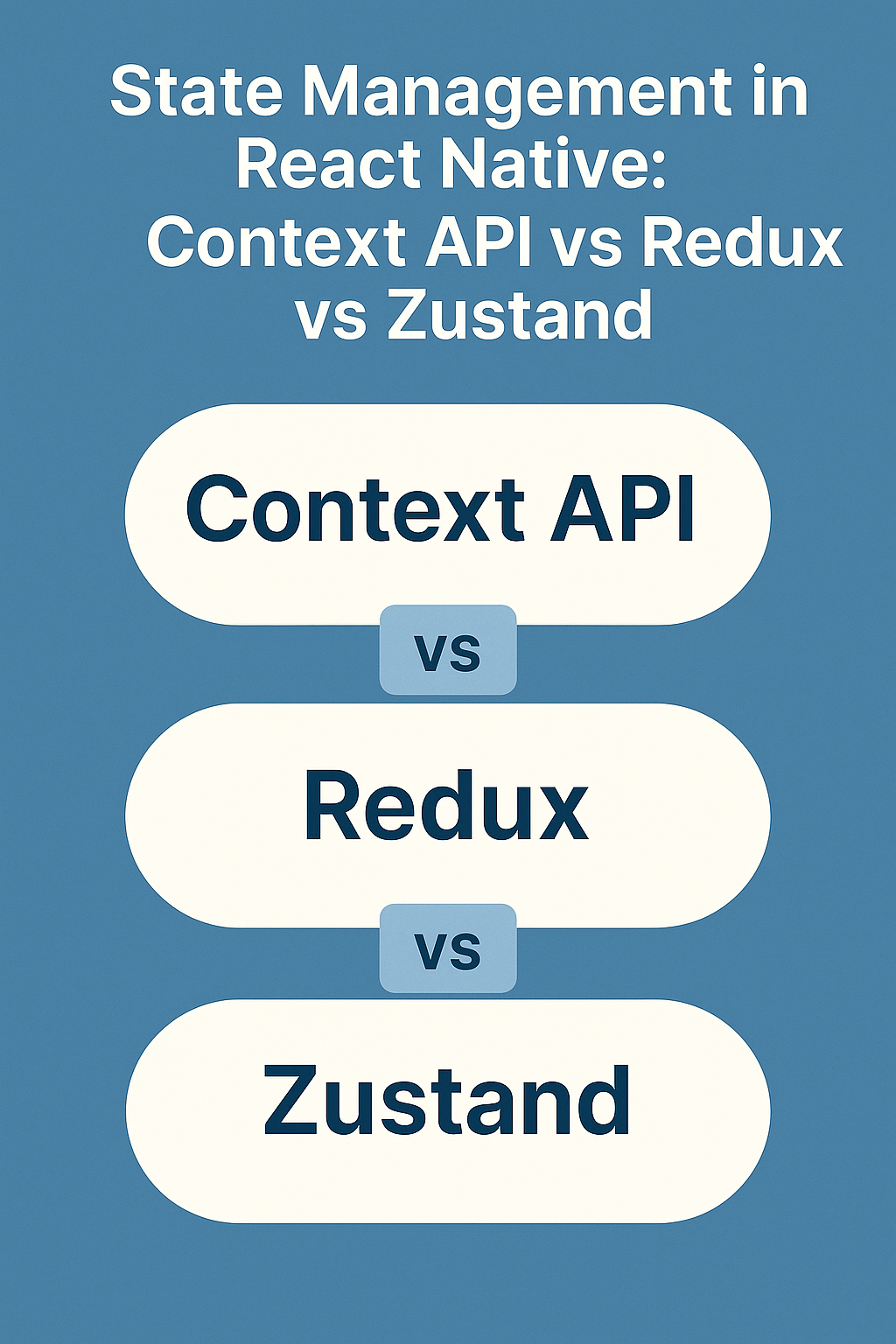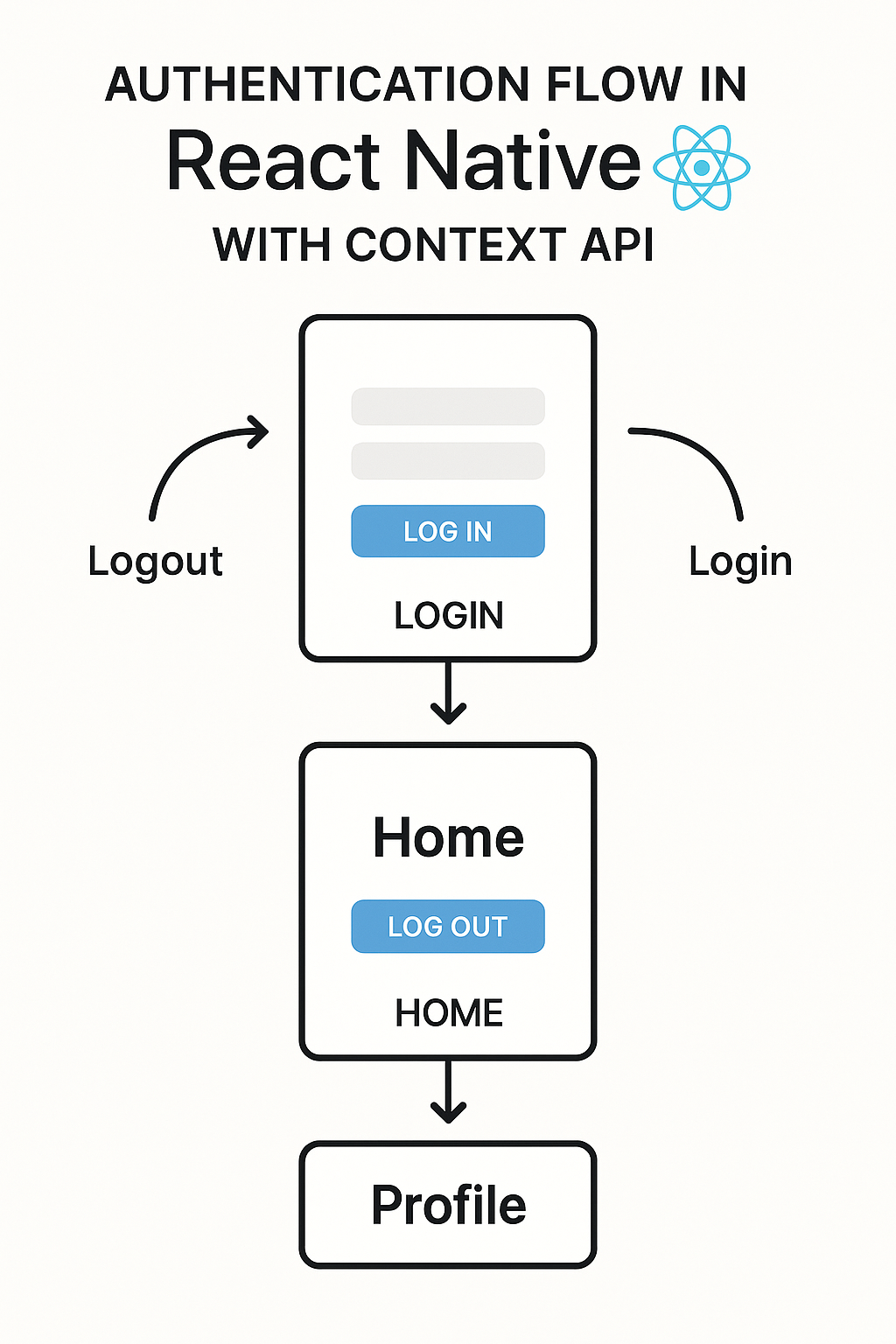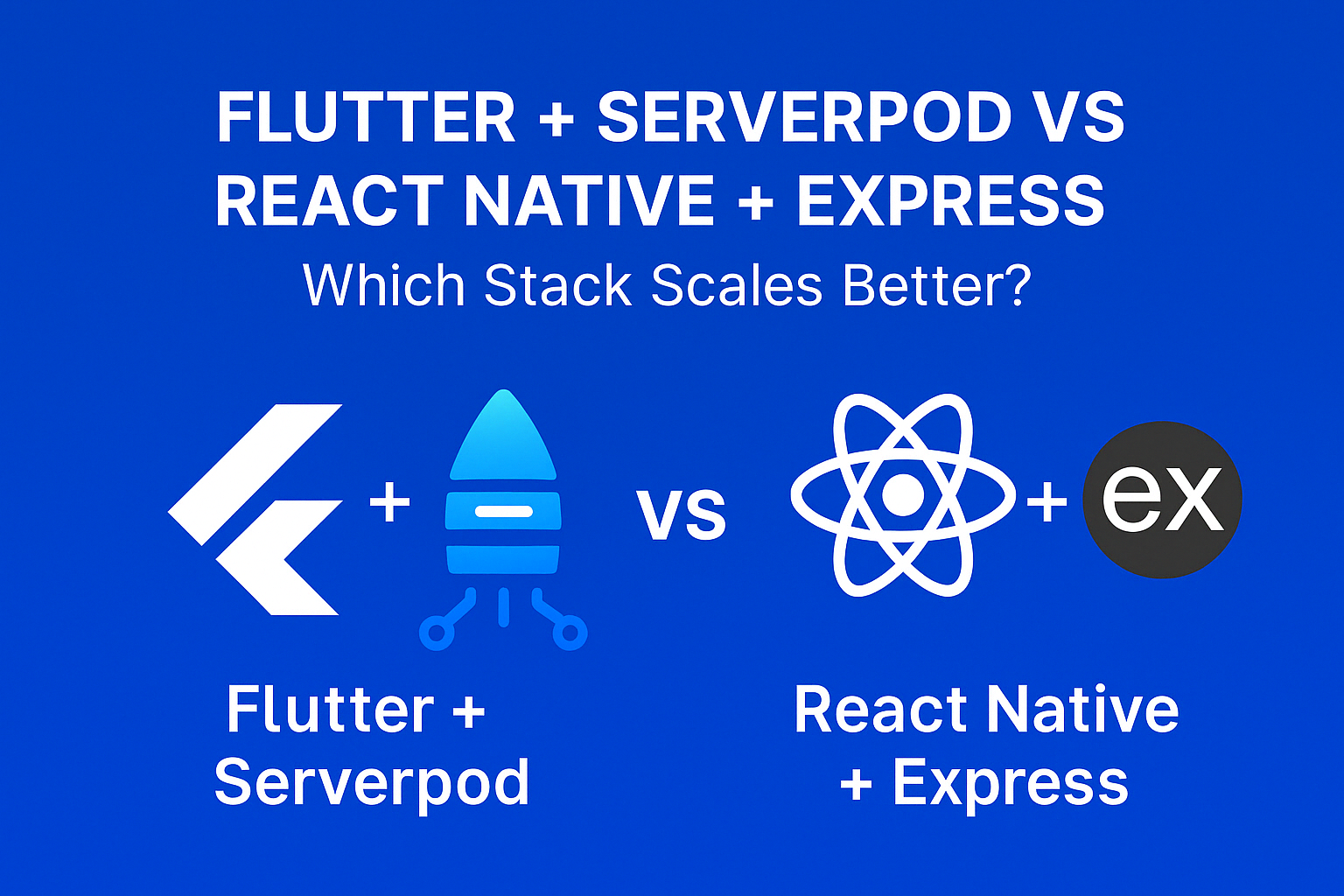
Managing state is one of the most important parts of building scalable React Native apps. With so many options available in 2025, how do you know which React Native state management solution to choose?
In this post, we’ll compare three of the most popular state management tools in the React Native ecosystem: Context API, Redux, and Zustand. We’ll explore when to use each, how they work, and which one fits best depending on your app’s size and complexity.
🧠 Why State Management Matters
State refers to data that determines how your app behaves and looks — like logged-in users, theme settings, or cart items. Without organized state, your app becomes hard to maintain as it grows.
🔹 1. React Context API
The Context API is built into React and allows you to share state across your component tree without prop drilling.
✅ Pros
- Built-in — no need for external libraries
- Simple to set up
- Great for small to medium apps
❌ Cons
- Not optimized for frequent updates (can trigger full re-renders)
- Lacks advanced dev tools and middleware
📦 Example
// ThemeContext.tsx
const ThemeContext = createContext();
export const ThemeProvider = ({ children }) => {
const [darkMode, setDarkMode] = useState(false);
return (
{children}
);
};
// use in components
const { darkMode } = useContext(ThemeContext);
🔸 2. Redux
Redux is a time-tested state management library that offers predictable state changes via actions and reducers. It’s ideal for apps with complex state flows and large teams.
✅ Pros
- Centralized and predictable state
- DevTools support for debugging
- Strong ecosystem and middleware (Redux Toolkit, Thunks, Sagas)
❌ Cons
- Verbose boilerplate (unless using Redux Toolkit)
- Requires more setup time
- Steeper learning curve for beginners
📦 Example (with Redux Toolkit)
// counterSlice.ts
const counterSlice = createSlice({
name: 'counter',
initialState: { value: 0 },
reducers: {
increment: state => { state.value += 1 },
}
});
// usage
const value = useSelector(state => state.counter.value);
const dispatch = useDispatch();
dispatch(increment());
🔹 3. Zustand
Zustand is a lightweight, fast, and intuitive state management solution created by the team behind Jotai and React Spring. It’s rapidly gaining popularity in the React Native world.
✅ Pros
- Minimal setup, zero boilerplate
- No provider needed — just import and use
- Built-in support for persist, middleware, devtools
- React 18-ready with selective re-renders
❌ Cons
- Smaller community compared to Redux
- Less familiar in enterprise teams
📦 Example
import { create } from 'zustand';
const useStore = create(set => ({
count: 0,
increment: () => set(state => ({ count: state.count + 1 })),
}));
// usage
const { count, increment } = useStore();
⚖️ Which One Should You Use?
| Feature | Context API | Redux | Zustand |
|---|---|---|---|
| Boilerplate | Low | High | Very Low |
| Performance | Medium | High | High |
| Built-in to React | ✅ | ❌ | ❌ |
| DevTools & Debugging | ❌ | ✅ | ✅ |
| Async Middleware | ❌ | ✅ | ✅ |
| Learning Curve | Low | Medium/High | Low |
| Great for large apps | ❌ | ✅ | ✅ |
✅ Final Thoughts
- Use Context API for simple global states (themes, auth, language)
- Use Redux when your app needs structure, middleware, and full control
- Use Zustand if you want lightweight, modern, and scalable state management with minimal boilerplate
Your choice should depend on your app size, team preferences, and long-term maintainability. Each of these tools solves state in its own way — the real key is consistency and clean architecture.


